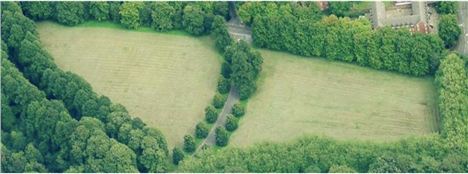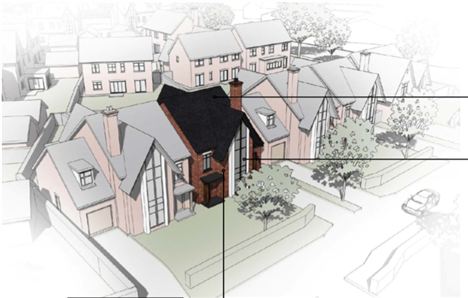A QUARTER of the trees around Sefton Park’s Meadowlands will be chopped down to make way for Redrow’s proposed development of 34 executive homes.
Details of the scheme have been revealed for the first time in the full planning application submitted by the developer which is owned by Garston-born multi-millionaire Steve Morgan.
The line of trees fronting Mossley Hill Drive and Queens Drive will stay, with Redrow saying special protection measures will be taken during the building programme.
But of the 110 trees on the Meadowlands – mainly London Plane, Horse Chestnut, Lime and Ash – 27 will go, though semi-mature trees will be planted as a replacement.
Most of the doomed trees currently line Park Avenue, though tree experts deem only six of the trees to have “high value”.
The new detached homes, with four or five bedrooms and multiple bathrooms, have been designed by Cheshire-based Calderpeel Partnership to reflect the Victorian Villas that line Sefton Park.
What has not been disclosed is how much Redrow will be paying for the site.
When Major Anderson first declared that the Meadowlands – or “incidental space” in Park Avenue, Mossley Hill, as the council persists in describing it – the unconfirmed price tag was up to £10m. That was based on the likelihood of more than 50 homes being built.
But the mayor ordered a smaller number of homes, and it is not yet known if that will have an impact of the size of the cheque signed by Redrow.
Redrow starts its main report by acknowledging that the land is allocated as “protected green space” under the council’s own planning blueprint, its urban design plan, or LUDP.
That plan, adds Redrow, prevents permission being granted for developments on green space unless the proposed development can be accommodated without causing material harm to the function of the land.
Redrow contends the fact that across the road lies the massive Sefton Park, therefore meeting the criteria to allow the development.
“The scheme does not conflict with the aims of the policy because Sefton Park borders the site,” it states.
For almost a year Redrow has been working on the plans along with the city council and English Heritage, the Government’s own cultural watchdog.
Their publication will open the door to public comments, objections and support, with the scheme heading for a meeting, in the next month or so, of the city council planning committee when a decision will be made.
As Redrow is seeking full planning permission, if the go-ahead is given they will be able to start work quickly, unless campaigners can find ways of halting or delaying the scheme.
Finishing job envisaged by Victorian planner Hornblower
 Hornblower's plan shows just nine plots for villas on land which will see 34 homes built
Hornblower's plan shows just nine plots for villas on land which will see 34 homes built
The application documents take a journey back in time to the original plan devised in the days of Queen Victoria which envisaged a park encircled by grand villas.
Redrow’s scheme will “complete Lewis Hornblower’s original idea of a strong boundary around Sefton Park”, it says.
Hornblower’s original design map is reproduced, though even on his plan no more than nine villas would have been built on the meadow, a fraction of the number Redrow wants to build.
Redrow describes the site as “currently a vacant meadow and has been since its allocation for development in the 1880s”.
It seems to be suggesting that almost 140 years later they are coming along to finish the job envisaged by Hornblower.
The houses facing the park will have direct driveway accesses onto it, in the same way the rest of the park villas access the perimeter road.
Redrow, working with the Calderpool Partnership, has devised a bespoke development of homes that are, they say, modern versions of the existing villas. It adds that in 150 years times have changed, reflected by the fact most of the original large homes around the park have been divided into apartments.


















